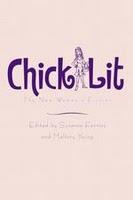Chick Lit: The New Woman's Fiction

You’ve seen it. Unmistakably pink, highly stylized and adorned with images of contemporary (glamorized) femininity – martini glasses, stilettos and Prada handbags. If you’ve stepped foot inside a chain bookstore in the past five years or so, you’ve seen chick lit in all its glory, usually grouped in a flashy eye-catching bunch near the front of the store. Hailed by some as “the new woman’s fiction,” the phenomenon known as chick lit is storming North America, the UK and beyond. Its escalating popularity among the twenty-something, (semi) professional female set is sparking much debate about its place in the literary marketplace. Chick Lit: The New Woman’s Fiction is a collection of essays that attempts to delve to the core of this question, and does so successfully.
Suzanne Ferriss and Mallory Young have put together a book that effectively gets beyond the brand names, witty banter and loveably disastrous gals that characterize chick lit, in order to explore the more meaningful intersections of gender, class, race and size that are present in this genre. Whether these issues are merely a byproduct of the narrative or explored intentionally remains questionable. Chick lit, on the surface, hardly begs to be taken seriously. What does need to be taken seriously is the economic industry that has sprung up around the genre due to its immense popularity with women of a certain socio-economic status. Chick Lit explores the causes and effects of this popularity and its implications for the publishing industry. In addition, this collection of essays diversifies what chick lit has come to mean, exploring various sub-genres – mommy lit, sistah lit, chick lit Jr, and nanny lit, to name some. This diversification shows the evolution of chick lit from exclusively white and middle- to upper-class to a wider audience.
Although these essays provide fresh and compelling insight into this “new woman’s fiction,” the central question remains unanswered and open to discussion: ultimately, what value does chick lit hold, socially, economically and culturally? While it has been dismissed as pointless froth about frivolous topics like shopping and boyfriends, one has to wonder whether chick lit is automatically devalued because of its “women’s fiction” label. Didn’t Nathaniel Hawthorne delegitimize the writing women of his own time, “the damned mob of scribbling women?” Included in this damned mob is author Jane Austen, whose novel Pride and Prejudice has direct connections with Helen Fielding’s Bridget Jones’ Diary, widely taken to be the mother of all chick lit. This book represents an excellent segway into serious discussion about the chick lit craze in a literary, historical and sociological context. Chick Lit: The New Woman’s Fiction is a must-read for chick lit’s most rabid fans and critics alike.
what value does it hold? well let see it makes me feel like Im not alone, all the stories although declared as fiction I am sure are based on personal events or friend events, they make you laugh, cheer you up and dont require all the bogus extra's that other novels do. Yay for chick lit!